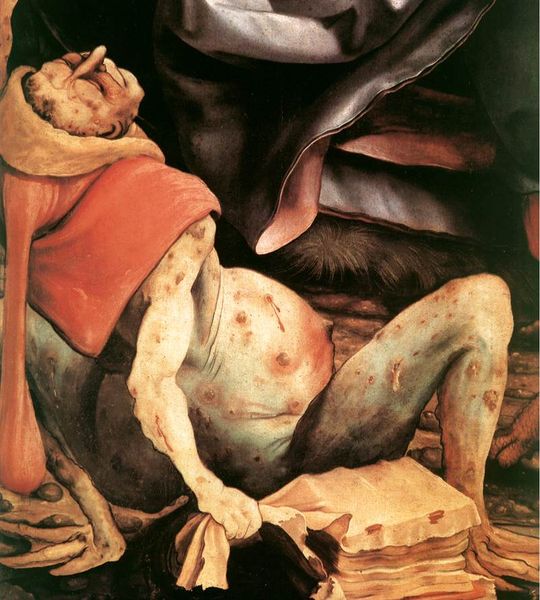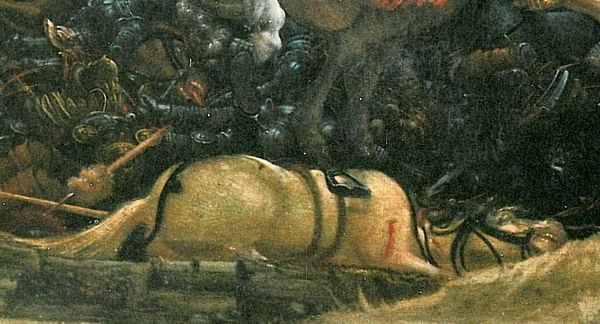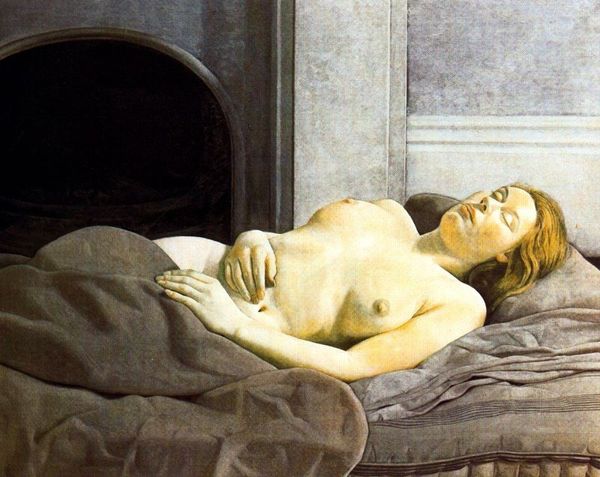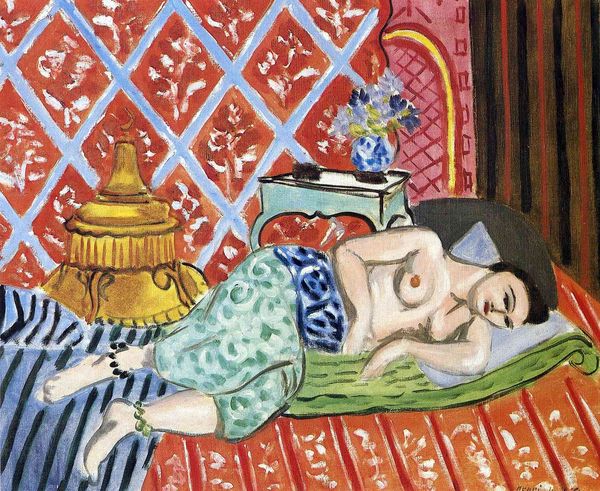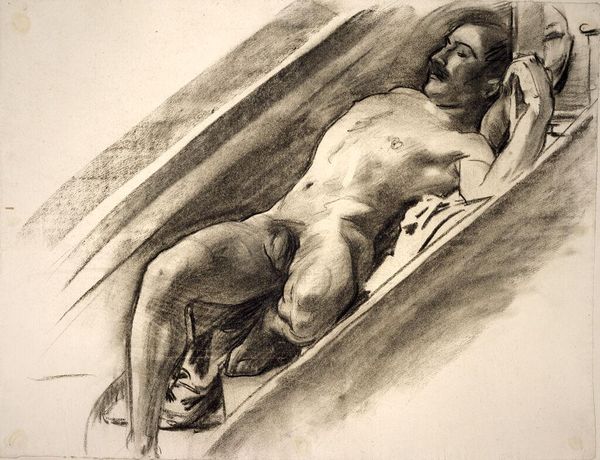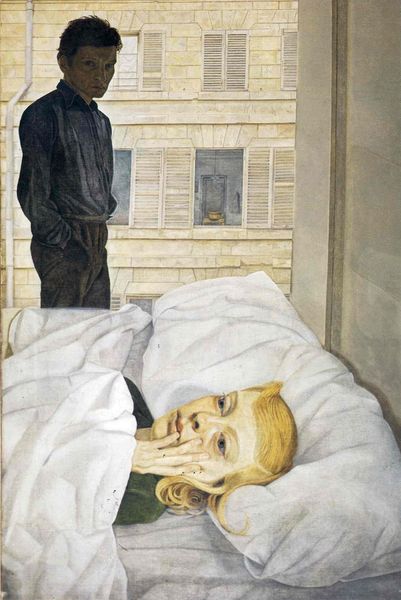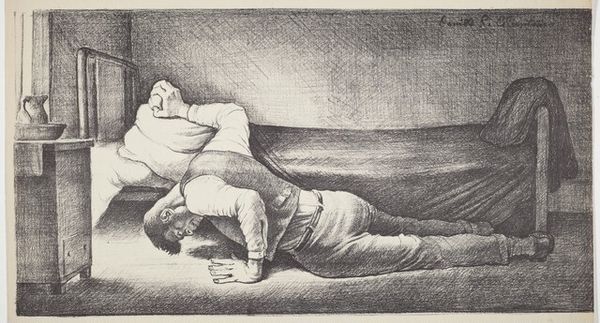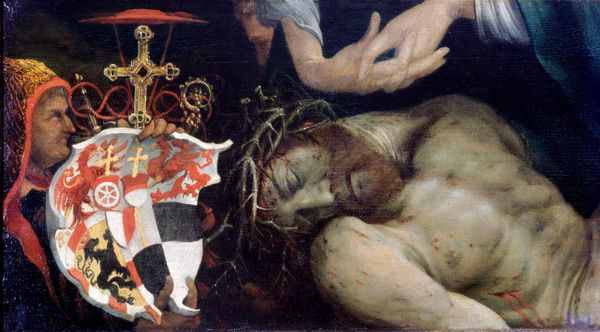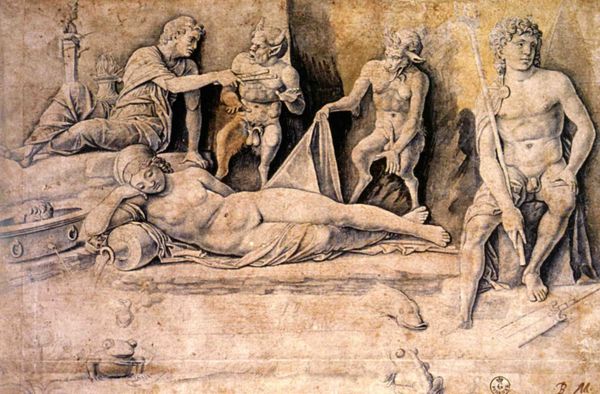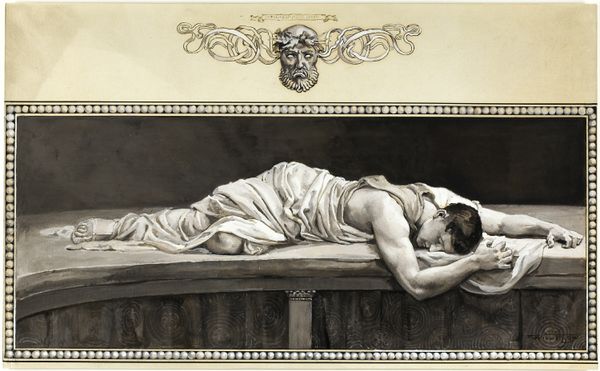
oil-paint
#
portrait
#
oil-paint
#
figuration
#
oil painting
#
momento-mori
#
christianity
#
history-painting
#
italian-renaissance
#
realism
#
christ
Dimensions: 81 x 68 cm
Copyright: Public domain
Editor: So, this is Andrea Mantegna's "The Dead Christ," painted around 1478, in oil. It’s… stark, isn't it? The foreshortening is almost aggressive. What strikes you when you look at it? Curator: The piercing view… isn't it? The cultural memory embedded within. This isn't just a dead body; it’s a deliberate confrontation with mortality. Think about the period - the Renaissance. Idealized beauty was prized, yet here, Mantegna forces us to confront decay and suffering, head-on. Editor: I see that, the almost brutal realism. The wounds, the… grayness of the skin. But why this angle? What does that contribute? Curator: Ah, the angle! That’s the key. It intensifies our empathy, forcing us to be present, intimate in a way most religious depictions avoid. Consider also those mourners, crammed into the corner: our emotional guides to the event depicted here. Can we detach them, those that guide our reaction? Editor: Not really, they pull you in, almost making you a mourner yourself. The symbols... the wounds… are like a visual language everyone understood. Curator: Precisely! And it’s not a language of triumph, but one of raw, human sorrow and loss. In that single image we encounter a narrative tradition - in a flash - of death as both material fact, and meaningful social transition. Editor: It's interesting how such an old painting can still feel so powerful and… unsettling. I came into this conversation with very basic questions and feel enriched by your ideas about what those signs and symbols might tell me about myself. Thank you! Curator: My pleasure. And, what you yourself bring is, of course, the future of the work itself, how new meanings will evolve over time.
Comments
No comments
Be the first to comment and join the conversation on the ultimate creative platform.

